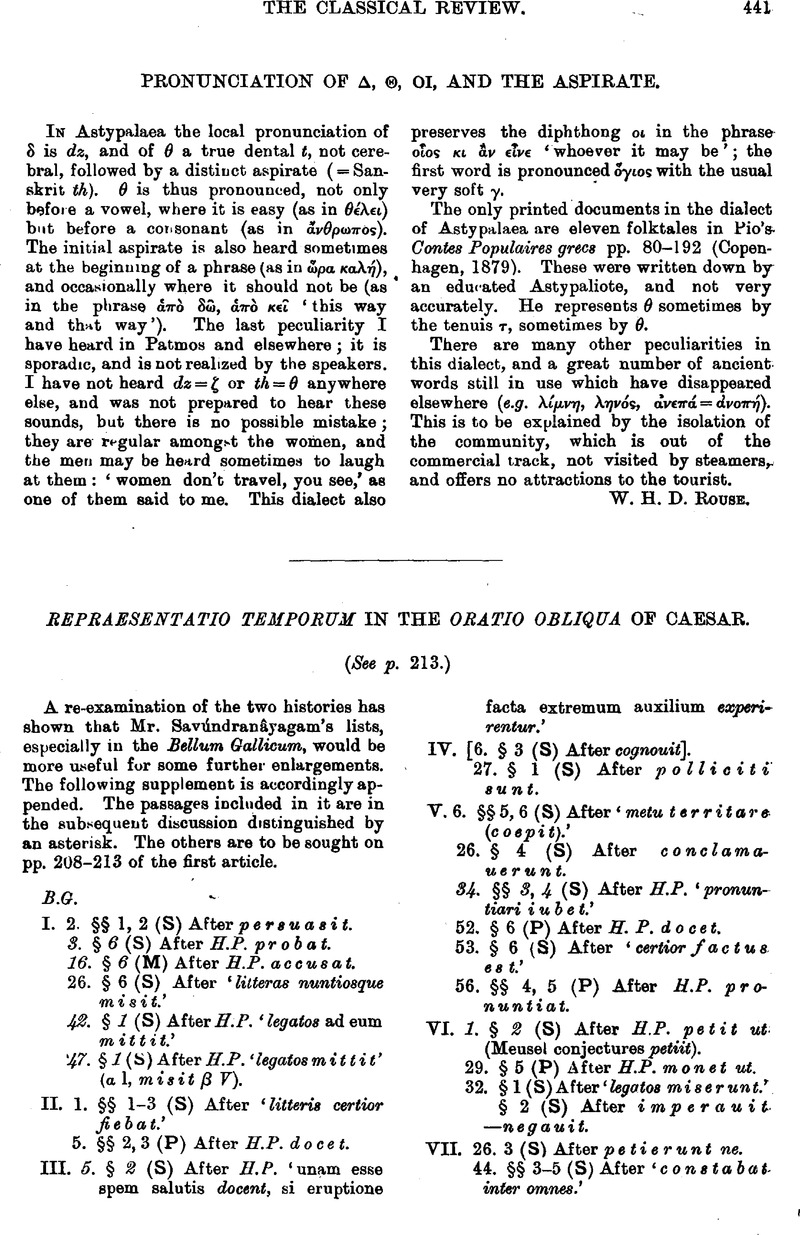Article contents
Repraesentatio Temporum in the Oratio Obliqua of Caesar
Published online by Cambridge University Press: 27 October 2009
Abstract

- Type
- Review Article
- Information
- Copyright
- Copyright © The Classical Association 1905
References
page 442 note 1 ‘In order to understand a Tense in Or. Obliqua it is absolutely necessary to consider what it represents in the Or. Recta—an elementary precaution which Draeger and others have singularly disregarded though it seems to be implied for instance by Postgate N.L.P. § 430 (10).’ On the Variation of Sequence in Oratio Obliqua, Appendix II. to his edition of Livy II., p. 189 aad footnote.
page 443 note 1 Exact statistics are intentionally avoided. The mixed cases are reckoned as exceptions.
page 445 note 1 In the quotation on p. 210 the reading given is α's; but the comma is misplaced.
- 1
- Cited by




